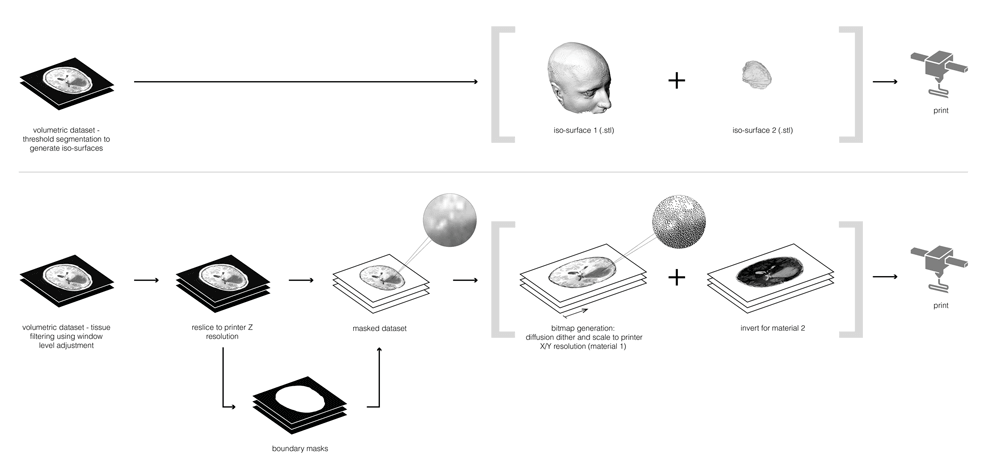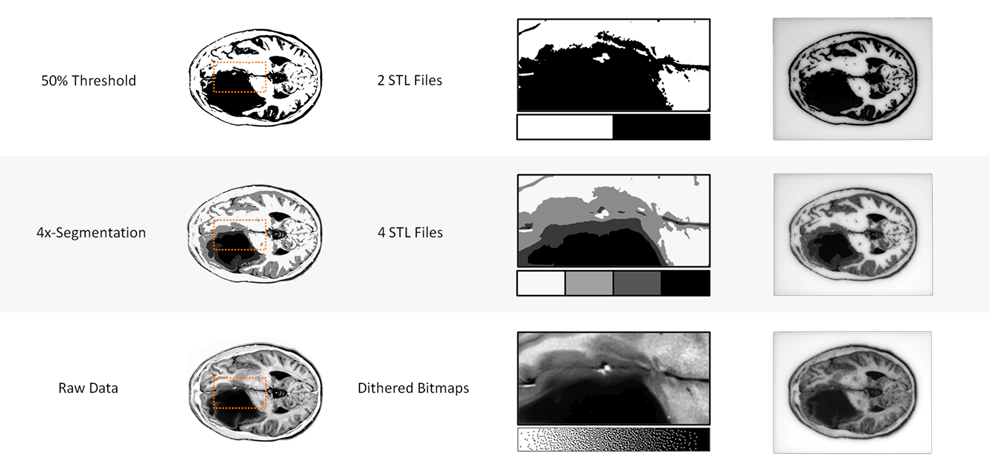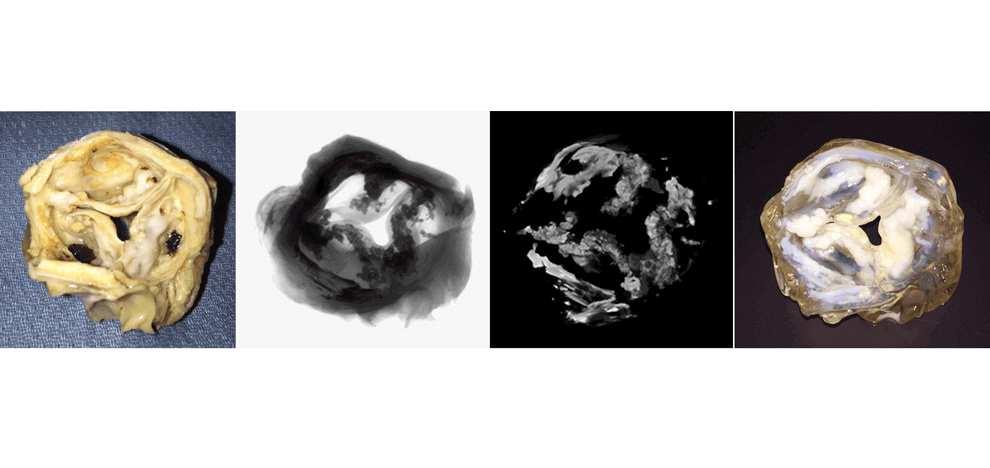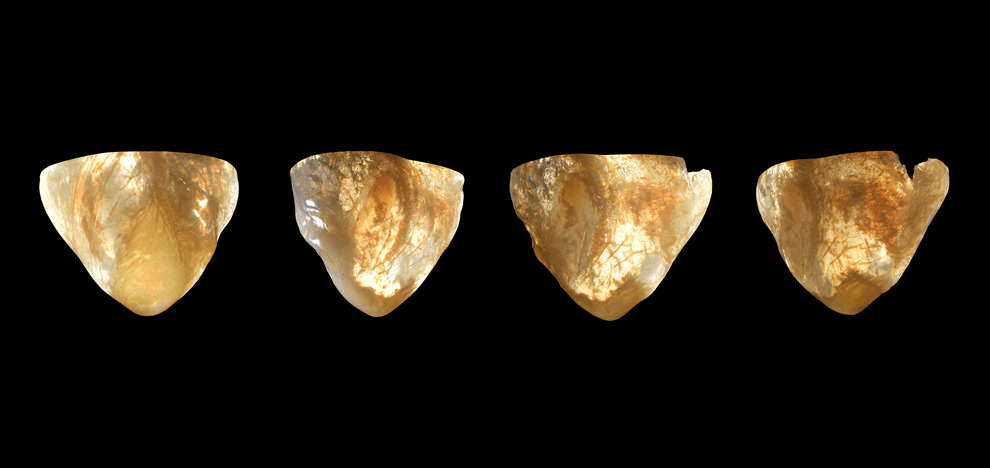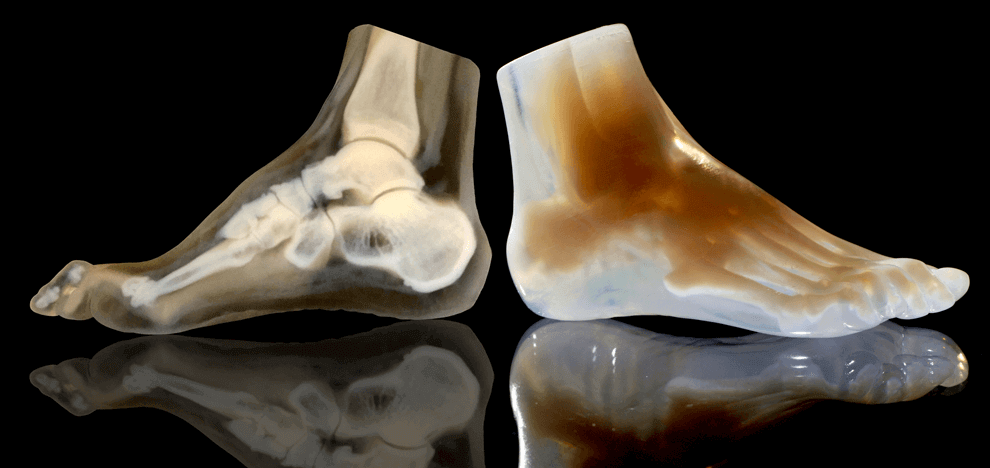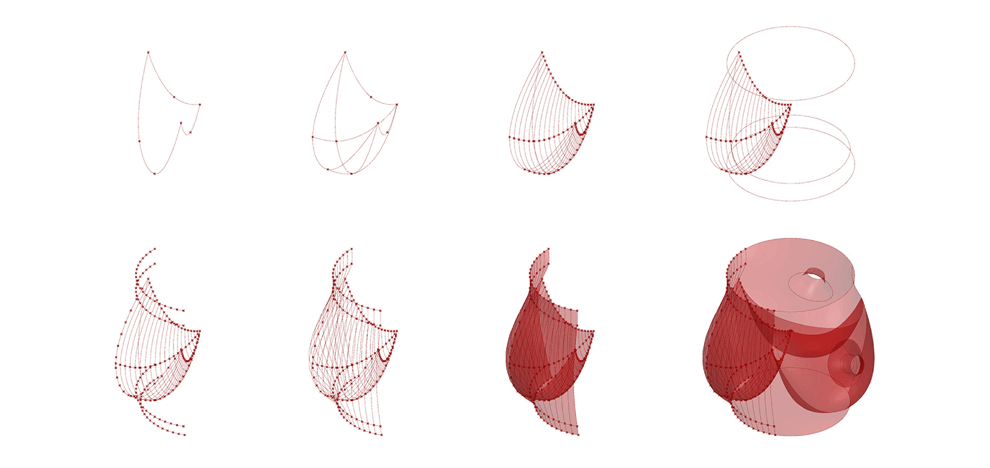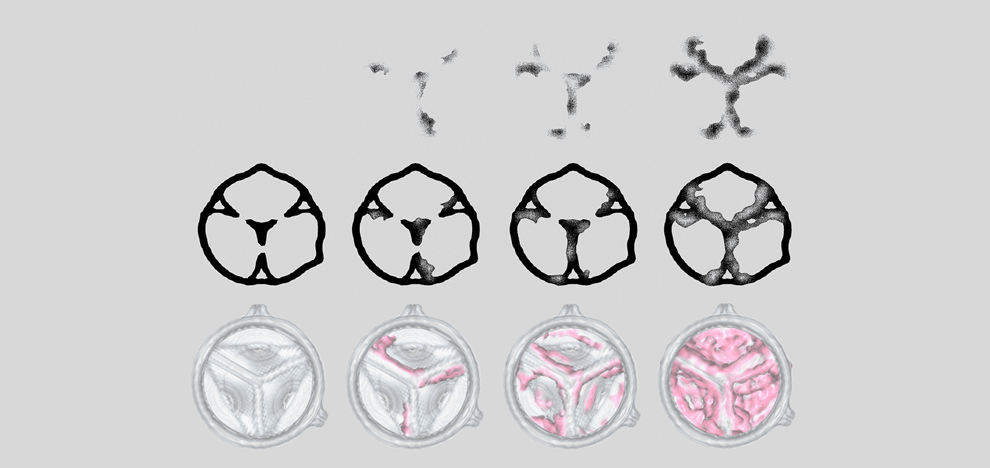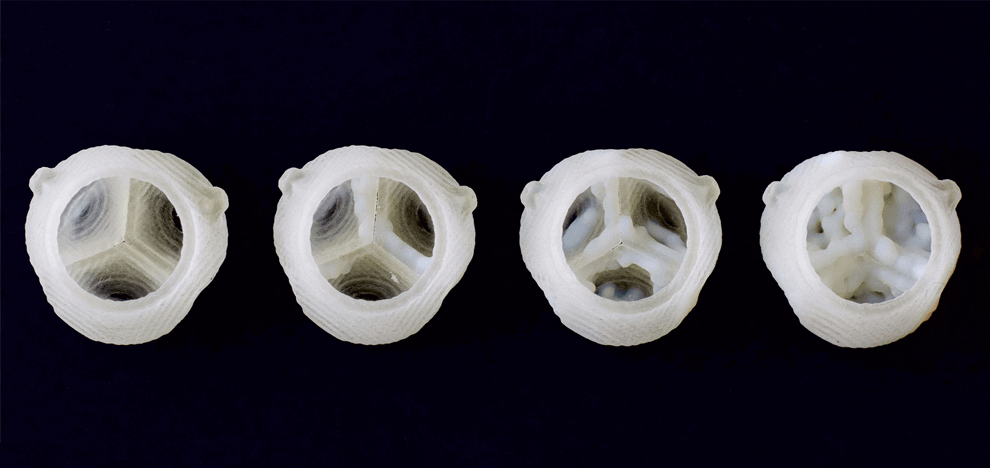3DP of Biomedical Datasets
Three-dimensional (3D) printing technologies are increasingly used to convert medical imaging studies into
tangible (physical) models of individual patient anatomy, allowing physicians, scientists, and patients an
unprecedented level of interaction with medical data. To date, virtually all 3D-printable medical data sets are
created using traditional image thresholding, subsequent isosurface extraction, and the generation of .stl surface
mesh file formats. These existing methods, however, are highly prone to segmentation artifacts that either overor
underexaggerate the features of interest, thus resulting in anatomically inaccurate 3D prints. In addition, they
often omit finer detailed structures and require time- and labor-intensive processes to visually verify their
accuracy. To circumvent these problems, we present a bitmap-based multimaterial 3D printing workflow for the
rapid and highly accurate generation of physical models directly from volumetric data stacks. This workflow
employs a thresholding-free approach that bypasses both isosurface creation and traditional mesh slicing
algorithms, hence significantly improving speed and accuracy of model creation. In addition, using preprocessed
binary bitmap slices as input to multimaterial 3D printers allows for the physical rendering of
functional gradients native to volumetric data sets, such as stiffness and opacity, opening the door for the
production of biomechanically accurate models.
The manuscript was published in 3D Printing & Additive Manufacturing and can be found here.
